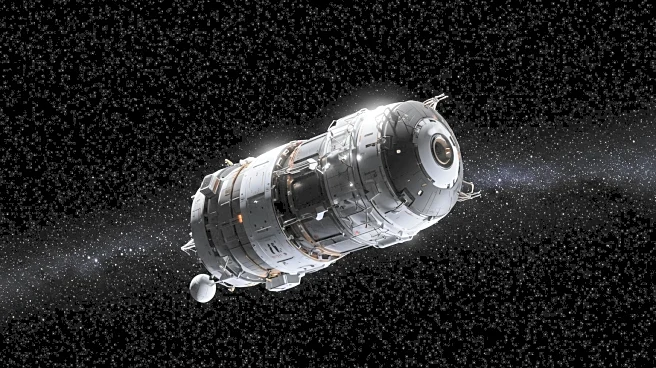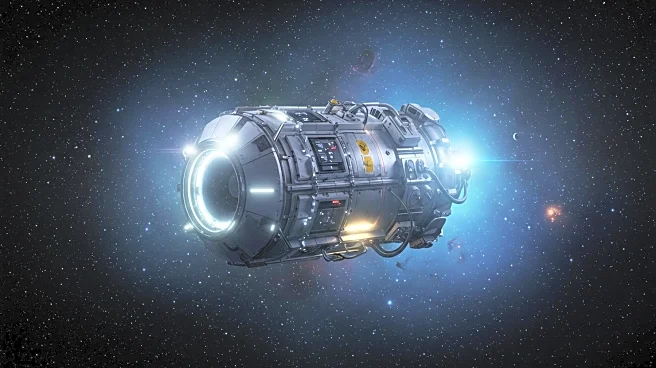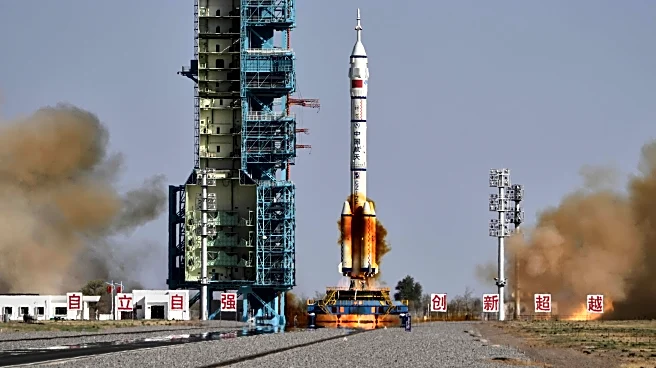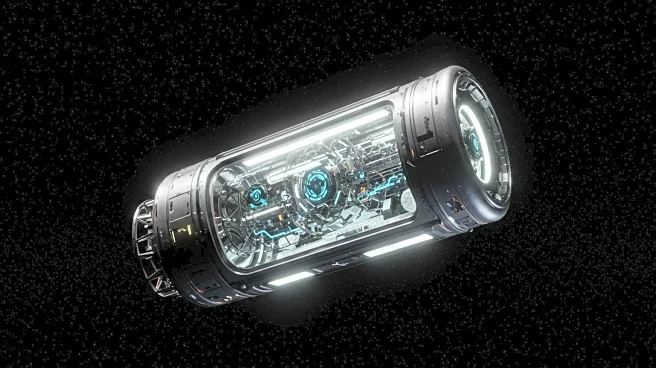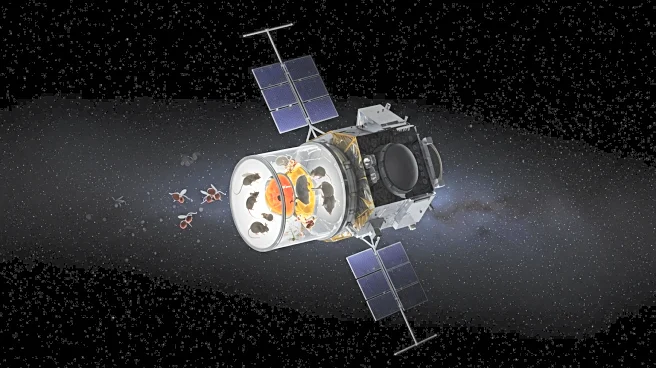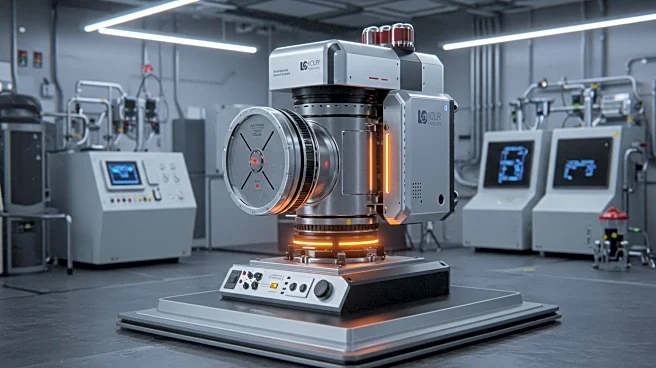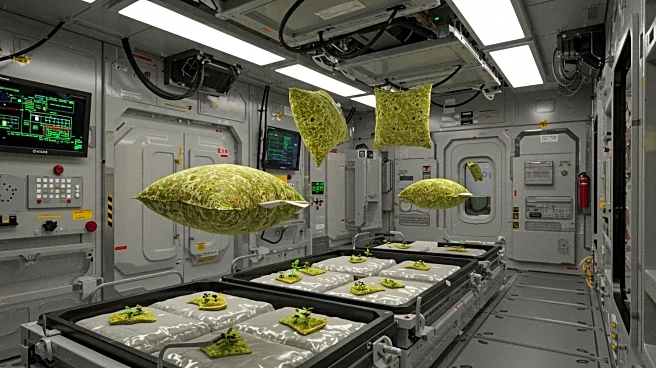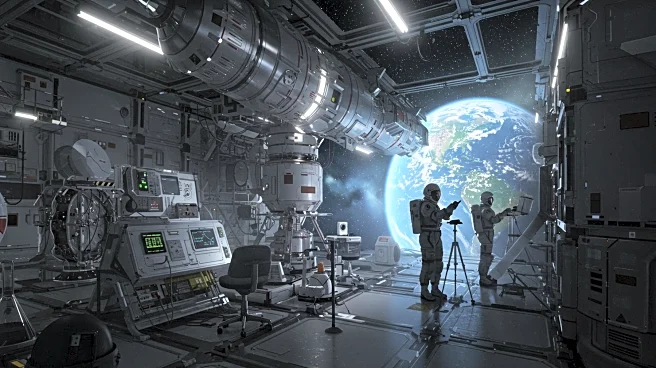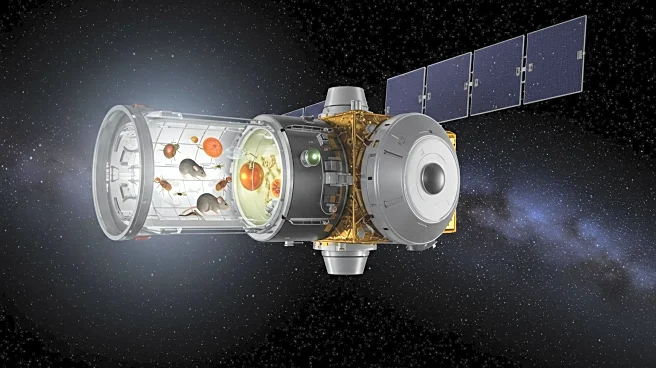What's Happening?
Russia is set to launch the Bion-M No. 2 biosatellite on August 20, 2025, from the Baikonur Cosmodrome in Kazakhstan. The mission, dubbed 'Noah's Ark,' aims to study the effects of space radiation and microgravity on living organisms, including 75 mice, over 1,000 fruit flies, and lunar simulants. The spacecraft will expose these specimens to high levels of radiation during its 30-day mission in space. The goal is to gather insights into the biological impacts of space travel, which are crucial for advancing deep-space missions and understanding long-term effects on human health. The mission will also test lunar simulants to assess their reaction to space conditions, aiding future lunar construction plans.
Why It's Important?
The Bion-M No. 2 mission is significant for its potential contributions to space medicine and astronaut health management. By studying the effects of space radiation on mice, which share genetic similarities with humans, researchers hope to gain insights into how space conditions affect biological systems. This data is vital for designing safer long-term space missions, particularly those involving human travel to the moon, Mars, and beyond. The mission's findings could lead to new technologies and strategies to protect astronauts from harmful radiation, a major concern for extended space travel.
What's Next?
Upon the mission's completion, researchers will analyze the data collected from the mice and other specimens to understand their adaptation to space conditions and their readaptation upon returning to Earth's gravity. This analysis will help scientists assess the long-term effects of spaceflight on living organisms and develop strategies to mitigate risks for future missions. The study of lunar simulants will also provide insights into the feasibility of using local materials for construction on the moon, which is crucial for long-term lunar habitation.
Beyond the Headlines
The Bion-M No. 2 mission highlights the ethical considerations of using animals in space research. While the data gathered is invaluable for human space exploration, it raises questions about the welfare of the animals involved. The mission also underscores the importance of international collaboration in advancing space science, as the findings could benefit space agencies worldwide in their efforts to ensure astronaut safety.
